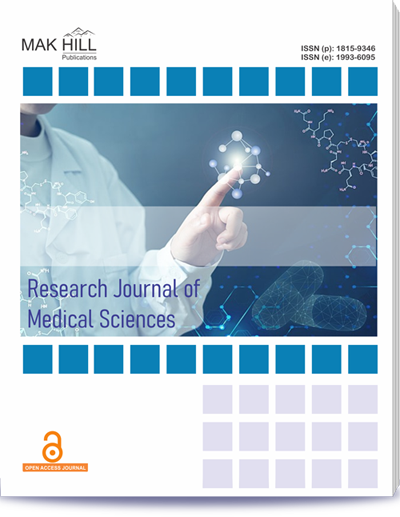
Research Journal of Medical Sciences
ISSN: Online 1993-6095ISSN: Print 1815-9346
Abstract
Cervical spondylosis is a pathological condition characterised by degenerative changes that primarily affect the cervical spine. This condition encompasses cervical radiculopathy and myelopathy, which are distinguished by the compression or irritation of nerve roots or the spinal cord, respectively. Cervical spondylosis often presents with degenerative alterations affecting the facet joints, hypertrophy of the ligamentum flavum and ossification of the posterior longitudinal ligament. Furthermore, it is possible for the occurrence of anterior and posterior osteophytes to manifest. The degenerative changes in the cervical spine possess the capacity to apply pressure on pain‐sensitive structures, resulting in the manifestation of diverse clinical syndromes accompanied by associated symptoms. Non‐surgical interventions, such as physical therapy, pain management and the administration of anti‐inflammatory medications, are commonly employed as initial treatment modalities for cervical spondylosis. In instances of heightened severity or when conservative approaches prove inadequate in delivering satisfactory relief, surgical interventions may be contemplated as a means to alleviate pressure on nerve structures. The purpose of this study was to assess the demographic pattern, symptomatology, radiographic features, various modalities of treatment and the functional outcome of the patients with cervical spondylosis. This retrospective study included 82 patients admitted with neck pain or weakness in upper and lower limbs or radiologically diagnosed case of cervical spondylosis under department of neurosurgery, GRMC and associated J.A. group of Hospitals from May 2021 to April 2023 who seek medical or surgical management. No randomisation done. A statistical analysis of patients with cervical radiculopathy and myelopathy revealed that males in the age group of 40‐50 years were commonly affected, particularly those engaged in manual labor. Radiculopathy symptoms lasted less than 3 months, while myelopathy symptoms persisted between 3 months and 1 year. Myelopathy patients had a smaller anteroposterior diameter <10 mm on MRI compared to radiculopathy patients 10‐12 mm and regardless of treatment approach (surgical or conservative), pain reduction was significant in operated patients. Cervical spondylosis is a natural ageing process and occurs in most people after the age of five. Most people with spondylotic changes in the cervical spine on radiographs remain asymptomatic. Cervical spondylosis is usually diagnosed for clinical reasons only but imaging is also required. Treatment for cervical spondylosis can be medical or surgical, depending on whether the patient has symptoms of myelopathy, radicular pain, or neck pain.
How to cite this article:
Kankane Vivek Kumar, Jeswani Mayank, Shukla Avdhesh, Gupta Sunny and Sharma Avinash. Cervical Spondylosis: Clinicoradiological Correlation, Management and Outcome.
DOI: https://doi.org/10.36478/10.59218/makrjms.2023.170.174
URL: https://www.makhillpublications.co/view-article/1815-9346/10.59218/makrjms.2023.170.174